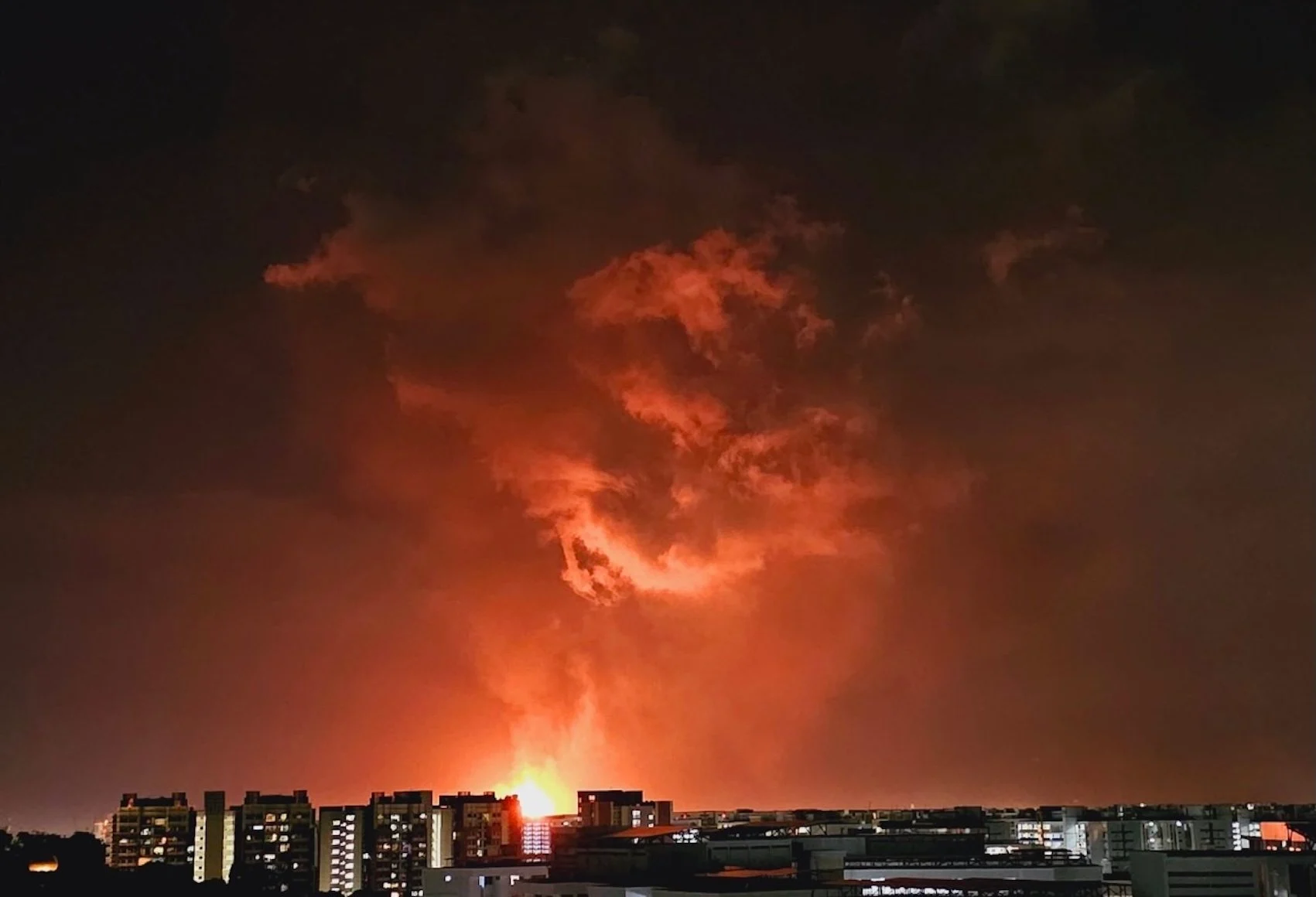Copyright scmp

When Christine Li first moved into her flat in Singapore’s northeastern estate of Punggol in 2021, she noticed a strong acrid odour in the air. “Sometimes the smell lingers for weeks and months, it actually made me feel nauseous when we first moved in,” said Li, 42. “At times it smells acidic, and sometimes it smells like something is burning. “We subsequently installed an air conditioner and fan in our living room for ventilation because our windows are always shut to keep the bad air out,” she said. Residents in coastal estates such as Punggol told This Week in Asia that they had been experiencing smoke and chemical smells from an industrial estate across the Johor Strait for years. Earlier this month, smoke and an orange flare from a chemical plant at Pasir Gudang in eastern Johor Bahru were visible from different parts of Singapore. Upon noticing the flare, Punggol resident Emerson Chua shut all of the windows in his house, a response that has become a reflex ever since 2019, when he moved into his flat. “Within weeks of moving in, my family knew that the air quality would not be great,” said the 27-year-old scuba diving instructor. “We have a view of Pasir Gudang, and every time there’s a breeze from that direction, we’d notice unnatural smells of chemicals or burning.” It feels like we have made a mistake buying this property Christine Li, a resident in Singapore’s Punggol Petrochemical company Lotte Chemical Titan subsequently said the flare was a result of an emergency shutdown due to an electrical supply outage at its site in Pasir Gudang. In response to the incident, Singapore’s National Environment Agency said on social media that the air quality at estates near Johor was within normal variations. But residents are concerned that exposure to emissions, even at low concentrations, could lead to adverse health effects in the long run. Li said her family worried that the emissions might be carcinogenic. “It feels like we have made a mistake buying this property, and we can’t do much about it,” she said. Edmund Lin, a 52-year-old consultant, told This Week in Asia that his mother moved into a flat in Northshore, a waterfront district in Punggol, less than five years ago and had since been troubled by the smell of chemicals. “The smell is one issue in the short term, but if it comes with toxic effects, we shouldn’t neglect it any more. Even if the concentration is small, there might be cumulative effects in the long term,” he said. “There should be something done to minimise the pollution so that it’s not so harmful for our people,” said Lin, noting that the district would soon be more populated with the opening of more facilities, such as a university campus and a business park. Lin raised his concerns via an email last week to an MP of the estate, who forwarded it to the National Environment Agency. According to Lin, the agency has yet to respond. His mother has since moved out of Punggol to a central location in Singapore. The industrial estate in Pasir Gudang is reportedly home to over 2,000 factories, with 250 of them being chemical factories. The rest are from other industries, including shipbuilding, manufacturing, logistics and transport. Petrochemical plants produce volatile organic compounds, such as benzene, toluene and ethylbenzene, which may cause health concerns if inhaled at high levels, according to environmental epidemiologist Joel Aik. Short-term effects at heightened exposure levels include sensory irritation, headaches, respiratory illnesses and eye inflammation, while long-term effects include cancer, according to Aik. The acrid odour might be nitrogen oxide, often emitted during metal production, said Aik, an adjunct assistant professor at the Duke-NUS Medical School. He said high levels of the gas had been detected in Pasir Gudang, referring to a 2025 study published in the science journal Environmental Monitoring and Assessment. “Given the right weather conditions, nitrogen oxide could be dispersed well beyond the industrial area.” Pasir Gudang has faced scrutiny after being at the centre of multiple pollution incidents. In September, three factory workers were taken to a hospital following a chemical leak at one of the plants in the industrial estate. In 2019, illegal dumping of toxic waste at a river near the estate, Sungai Kim Kim, resulted in toxic fumes affecting thousands of residents and forcing around 100 schools to close. Last February, Johor’s Department of Environment found that four rivers around the industrial estate, including Sungai Kim Kim, were polluted. A few months later, the Johor government amended its Environmental Quality Act, increasing the penalties for polluters to a fine of up to 10 million ringgit (US$2.4 million) and a jail term. Offences under the Act include water pollution, oil pollution and illegal waste disposal. Johor authorities were facing community and institutional pressure to keep the state’s rivers unpolluted due to the importance of the waters for the livelihoods of their residents, said environmentalist Tan-Soo Jie-Sheng, who noted residents living near the coastline and fishing for their sustenance. As a result, the possibility of a significant level of pollution affecting Singapore’s waters would be low, said the assistant professor at the Lee Kuan Yew School of Public Policy at the National University of Singapore. In the unlikely situation that pollutants were to reach the Johor Strait, they would be diluted by tidal mixing, he added. “In extreme cases, the main impact would likely be local [to Johor], such as reduced fish stocks and unsafe contact waters near the discharge point, rather than widespread effects on Singapore,” he said. But the lack of data on emission levels makes it difficult to discern whether they pose a threat to the health of Singaporeans, according to environmental experts. The National Environment Agency has said it regularly monitors levels of volatile organic compounds in the air and water quality along the Johor Straits and Straits of Singapore, but the data is not publicly available. Tan-Soo, the incoming director at the Institute of Environment and Sustainability, said that the agency might want to consider releasing the data to reassure the public. “In all, transparent reporting helps reassure nearby communities in Johor and Singapore,” he said. “For industries, maintaining strict maintenance and leak-detection protocols is critical,” he added. “In the unlikely event that substantial transboundary pollution is detected, cooperative mitigation would be the effective path forward.”



